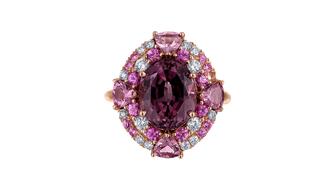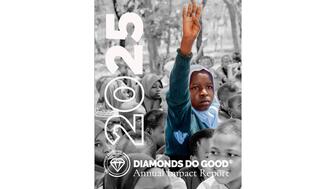As the shopping mall model evolves and online retail grows, Smith shares his predictions for the future of physical stores.
To carry, or not to carry
I personally attended two panels in Las Vegas where the topic of lab-grown diamonds, also called synthetics, came up; the first covered synthetic diamond disclosure and the second was on five forces shaping the future of the industry. No. 1 of those five was lab-grown diamonds.

The most egregious case documented so far has been the 145 undisclosed synthetics that surfaced in the spring of 2012 at the International Gemological Institute’s Antwerp lab.
A number of other smaller incidents of non-disclosure have occurred since then. While this is obviously a situation the industry needs to address, I think the issue of non-disclosure, at times, overshadows a larger question surrounding lab-grown diamonds that nobody is really asking, even as production ramps up around the globe.
And that is this: Retailers, would you carry a line of lab-grown diamond jewelry in your store? How much actual demand do you see for this product?
There are, after all, legitimate, ethical designers and companies selling synthetics.
Lita Asscher, one of the panelists for the five forces shaping the industry talk mentioned above, is the president of Royal Asscher of America. Her family’s company, which has a rich history in the natural diamond business, sells a line of lab-grown colored fashion diamond jewelry called Rebel Chique online. It’s a great way for people to own yellow, pink or blue diamond jewelry, pieces that would be monetarily out of reach for the vast majority of consumers if set with natural stones.

When I first saw Reena’s news release, I was intrigued. What would make a designer who has worked exclusively with natural stones decide to create a line using lab-grown diamonds? And how was the response from retailers at JCK Las Vegas, where she exhibited the line for the first time?
Reena told me that for her, the choice to design with lab-grown diamonds was a personal and artistic one that sprouted from her own interest in nature vs. nurture. To her, lab-grown diamonds are an example of human innovation and our ability to take inspiration from nature and create something through nurture.
She said at the show, response to her first Nuture line, The Moments Collection, was very positive because the retailers are looking for something different.
In the end, Reena said, today’s consumers are looking for a choice, and that is all she trying to give them: a choice to buy lab-grown diamond jewelry if they want it, with clear education and total transparency.
“The question I would ask is, what can we do to make sure that lab-grown diamonds find their rightful place and are given the ability to present themselves fairly?” Reena said. “History has shown that with acceptance comes peace, harmony and real growth.”
So, retailers, the question comes down to you: to carry, or not to carry, jewelry set with lab-grown diamonds in your store?
The Latest

The trade show is slated for Jan. 31-Feb. 2 at The Lighthouse in New York City's Chelsea neighborhood.

January’s birthstone comes in a rainbow of colors, from the traditional red to orange, purple, and green.

How Jewelers of America’s 20 Under 40 are leading to ensure a brighter future for the jewelry industry.

The annual report highlights how it supported communities in areas where natural diamonds are mined, crafted, and sold.


Footage of a fight breaking out in the NYC Diamond District was viewed millions of times on Instagram and Facebook.

The supplier has a curated list of must-have tools for jewelers doing in-house custom work this year.

Roseco’s 704-page catalog showcases new lab-grown diamonds, findings, tools & more—available in print or interactive digital editions.

The Signet Jewelers-owned store, which turned 100 last year, calls its new concept stores “The Edit.”

Linda Coutu is rejoining the precious metals provider as its director of sales.

The governing board welcomed two new members, Claire Scragg and Susan Eisen.

Sparkle with festive diamond jewelry as we celebrate the beginning of 2026.

The master jeweler, Olympian, former senator, and Korean War veteran founded the brand Nighthorse Jewelry.

In its annual report, Pinterest noted an increase in searches for brooches, heirloom jewelry, and ‘80s luxury.

Executive Chairman Richard Baker will take over the role as rumors swirl that a bankruptcy filing is imminent for the troubled retailer.

Mohr had just retired in June after more than two decades as Couture’s retailer liaison.

Shekhar Shah of Real Gems Inc. will serve as president of the Indian Diamond & Colorstone Association in 2026.

This year’s good luck charm features the mythical horse Pegasus, and is our first Piece of the Week of the new year.

As part of the leadership transition, Sherry Smith will take on the role of vice president of coaching strategy and development.

It marks the third time the country has headed the Kimberley Process. Ghana will serve as vice chair.

The new Bulova x Stetson designs highlight two animals often associated with the American West—the bison and the Texas Longhorn.

Its residency at Yamron Jewelers will run through May 2026.

From influential executives to innovative designers, we pay tribute to the people we said goodbye to this year.

The retailer is expanding into areas with large Indian and South Asian populations.

The Italian brand has opened its first flagship amid the peaks of the Dolomites in Madonna di Campiglio, Italy.

The new curation at the Natural History Museum of Los Angeles County showcases rare gem and mineral specimens in their uncut, natural state.

The couple pleaded guilty to concealing at least $127 million in cash transactions at its precious metals businesses.



























